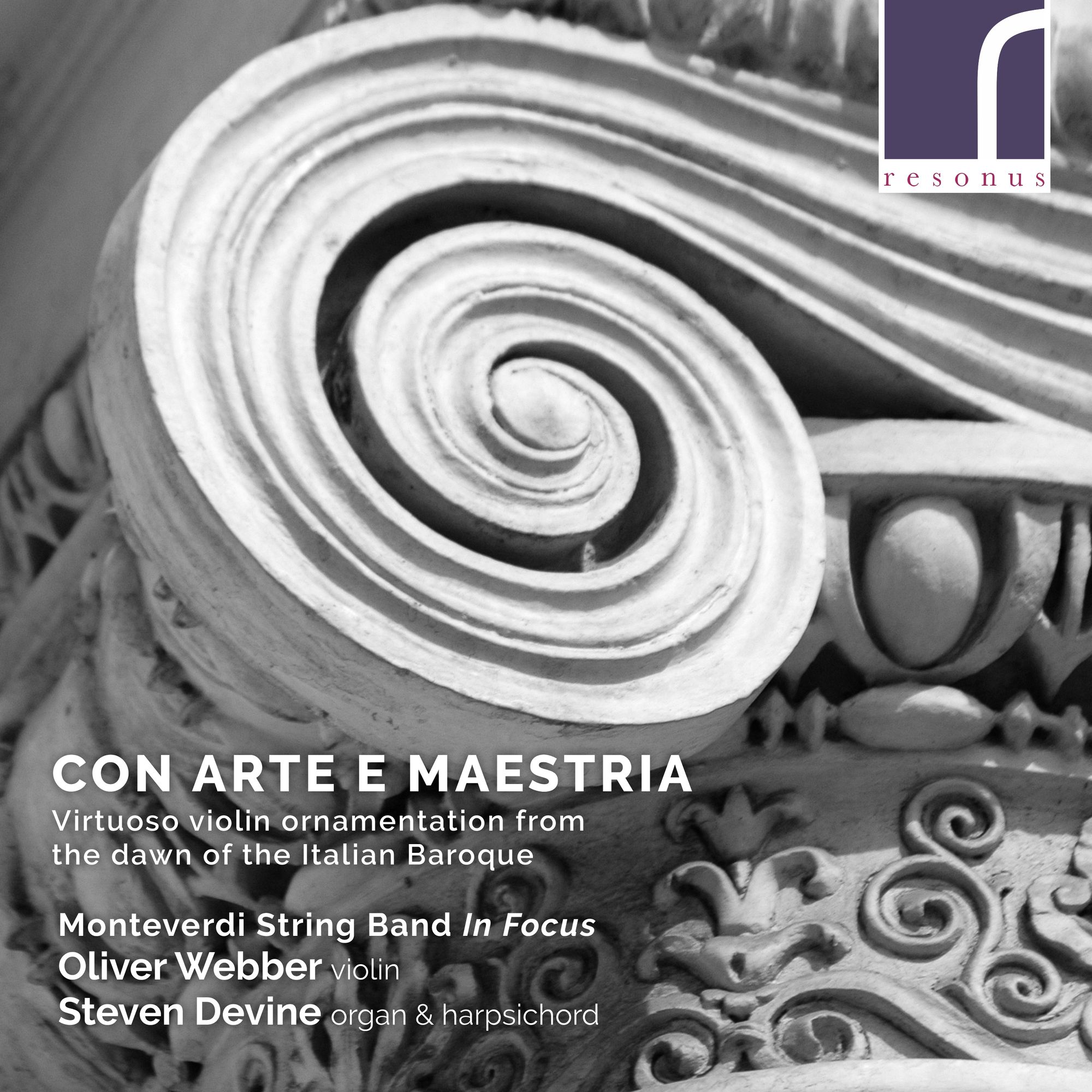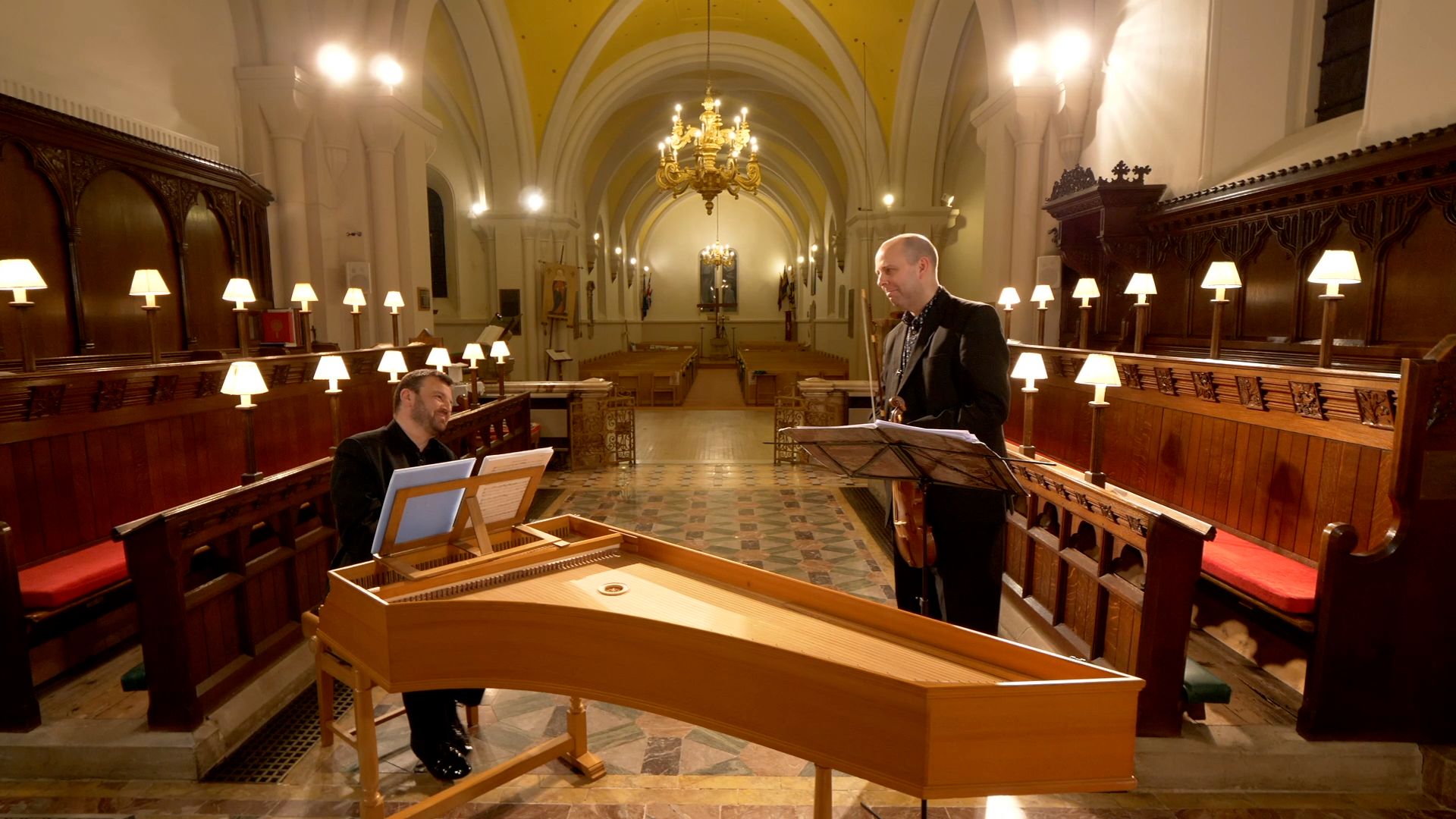Con Arte e Maestria

Nice to add a sort of semi-didactic element to a post - I've learned loads via this disc, which centres on "virtuoso violin ornamentation from the dawn of the Italian Baroque"; the years around 1600, in other words. Billed as the "Monteverdi String Band In Focus," the disc title is "Con arte e maestria" - with art and skill,
Have a listen to this introductory video: the first minute is taken up by a performance of a madrigal written by Palestrina in the final decades of of the 16th century, ornamented in the style of the string player and composer Riccardo Rognoni (c 1550- c 1620):
The disc, then explores an improvisatory tradition, whether with ornamentations provided by explicit other composers or, in some cases (for example, Thomas Crequillon's Par trop souffrir de fortune ennemie), we hear Webber's own ornamentation in this style. In this video, Webber goes into more detail. showing different variants on another Palestrina madrigal:
The very first track gives one an idea of the ornamentation of this period, Ricercata prima by Giovanni Bassano (c 1564- 1617). The basis of this practice was "diminution" - creating pockets of smaller/quicker notes from slower ones. Lovely to hear Webber alone in the wonderful acoustic of St John's Loughton (a great recording venue):

Basing his performances on techniques explored in two treatises by Giovanni dalla Casa (1584) and Riccardo Rognoni (1592), Webber creates a fascinating journey, as if he creates his own elaborate "Theseus thread" to navigate his way through these pieces. In Cipriano de Rore's Anchor che col partire (violin ornaments by Riccardo Rognoni) one hears this perfectly:
We can hear the practice of diminution here easily (as he does it systematically, as did dalla Casa; Rognoni was prone to go a little more off piste).
This disc is like a listener's playground as well as a performers'. There is more fun than one might think exploring this territory once one has the idea what's going on - it is a bit like exploring jazz improv, but centuries before. And Oliver Webber clearly has fun, too/ here's his own ornaments to a piece by Thomas Crecquillon, Par trop souffrir de fortune, enemie (as mentioned above). What I find fascinating here is that he earlier part of the piece sets forth a sense of noble gravitas and, no matter how active the violin part gets, that sense of gravitas remains, partly because of the harpsichord, implacably continuing on in the background, partly because of the skilful placing of the ornaments themselves:
There is no doubting the fact that Webber has fun here. Here''s "his" Ciaconna, with a nod to Monteverdi, Sances, and both Rognonis (Francesco and Riccardo); and how the music dances!:
The whole experience is so stimulating it makes one want to go explore further; but it also works beautifully as a programme on its own merits. Hearing the contrastive sound of a plaintive solo violin for Gärtner's Toccata against Steven Devine's performance of Giovanni Gabrieli's Toccata del secondo tonum is simply beautiful; as is their performance of Victoria's Dilectus tuus candidus with ornaments by Giovanni Battista Bovicellim, from the late 18th century for violin and organ. Let's hear this last, music of shadows, and one of the stand-out pieces on the disc:
The very final track, Palestrina's Io son ferito with ornaments by Francesco Rognoni, seems to sum up the excellence of the disc. Webber's diminutions seem to stem organically from the musical surface:
The booklet notes are incredibly helpful not least in giving notated examples of the various types of diminution. Performing editions are given, too. Adam Binks' recording is of the very first rank
